Akshay Anand
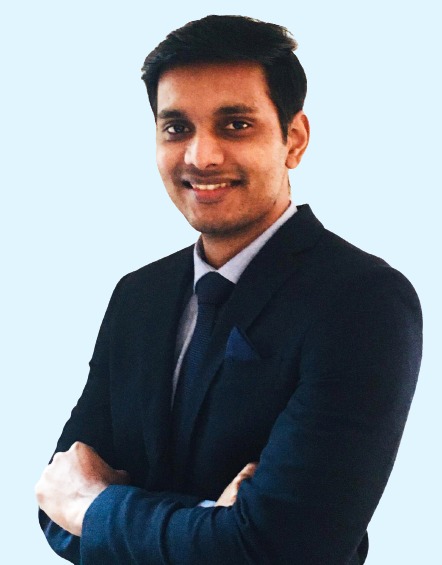
I am a Ph.D Candidate in the Department of Mechanical Engineering at Florida State University Tallahassee, USA. At FSU, I am a member of the Computational & Theoretical Multiphysics Laboratory (CTML). My current research focuses on devising an 'Analytical Model to Infer Mask Peripheral Leakage Pattern in Large Population'.
I also serve as the president of the Mechanical Engineering Graduate Student Association (MEGSA).
Advisor: Kourosh Shoele
Prior to joining CTML, I have worked as a Research Engineer at French National Center for Scientific Research (CNRS) and Georgia Tech Lorraine, France. Earlier, I have graduated with a Master's Degree (2017 - 2019) in Aeronautics and Space as a part of IMP - Turbulence, offered jointly by Ecole Centrale de Lille and ISAE - ENSMA, Poitiers, France. I have completed my undergraduate degree (2013 - 2017) in Mechanical Engineering from BIRT affiliated to RGPV University, Bhopal, India.
Here is my Email
Research
I am broadly interested in Applied Mathematics, Fluid Dynamics, CFD, Bio-inspired Engineering, Fluid-Structure Interactions, Turbulence Modelling, Machine Learning Applied to Fluid Dynamics and Systems Engineering. Some research are highlighted below.
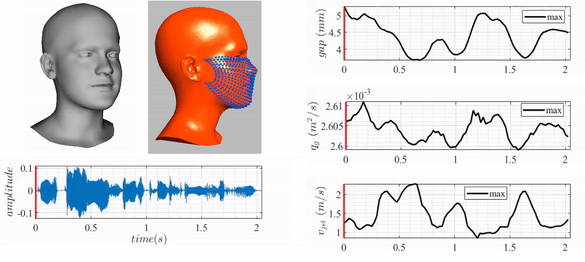 |
Akshay Anand*, Kourosh Shoele 76th APS - DFD, 19 - 21 November, Washington, DC, USA, 2023 conference Facemasks have proven their effectiveness in reducing the transmission of airborne viruses. However, their true efficacy depends on several factors, such as how well they fit, the shape of the wearer's face, respiratory patterns, filtration efficiency, and interactions with the mask materials. One significant concern is that during routine respiratory activities like talking, the shape of the face changes continuously, leading to gaps forming around the edges of the facemask. These gaps can have a substantial impact on the mask's overall effectiveness in protecting against virus transmission. To address this issue, our study utilized advanced machine learning and fast physics-based modeling techniques to create minimal surrogate models for a large virtual population. We mathematically represented the space between the face and the mask as interconnected channels with a porous top boundary. This allowed us to establish compatibility conditions and determine how the airflow leaks around the edge of the mask during various scenarios, including talking, and considering a diverse range of face shapes. We discuss simple metrics to quantify leakage patterns and assess mask efficacy during talking activities. Ultimately, this research can contribute to improving facemask designs and their overall performance in mitigating virus transmission. Click here |
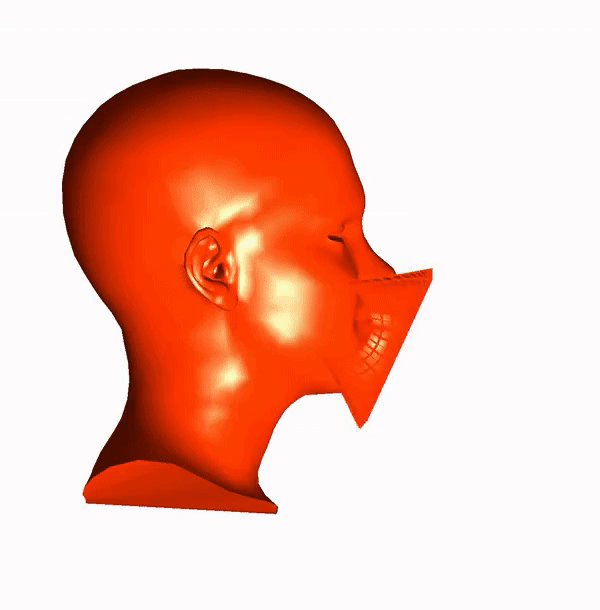 |
Akshay Anand*, Tso-Kang Wang, Tomas Solano, Kourosh Shoele 75th APS - DFD, 20 - 22 November, Indianapolis, IN, USA, 2022 conference Recent studies have shown that the flow generated during routine daily activities such as talking, breathing, and laughing has the potential to spread the SARS-CoV-2 virus. Droplets produced during everyday speech may act as a catalyst in the transmission of COVID-19. Here, we focus on understanding how some syllables may induce mouth movement and further may result in a poor fit of the mask during talking, resulting in modified leakages from the gaps. A novel analytical integral boundary layer solution is devised to quantify the flow in the interface region between the face and the mask. The mask is deployed on the face using the concept of minimum elastic energy to ensure a natural fit. The space between the face and the mask is mathematically modeled with a series of interconnected channels with the porous top boundary, wherein the compatibility conditions determine the channel flow distribution. The model is validated with a detailed flow simulation and employed to find the interconnected relation between fitness during talking, porosity, and leakage through the mask. We quantify the effectiveness of face masks during talking in a large cohort of faces and diverse probable talking scenarios to advise simple metrics that can quantify the leakage pattern and mask efficacy in talking activities. Click here |
 |
Akshay Anand*, Tso-Kang Wang, Tomas Solano, Kourosh Shoele 19th U.S. National Congress on Theoretical and Applied Mechanics, Austin, TX, USA, 2022 conference Recent studies have shown that the airborne transmission of Coronavirus Disease (COVID-19) is possible via an infected individual's release of respiratory droplets during sneezing, coughing, or talking. Due to airborne transmission of COVID-19, the use of face masks has effectively diminished the spread of the virus. However, the extent to which a mask can provide protection depends on how well the mask “fit” on the wearers face and the mask material. The fit of a simple cloth mask is expected to vary from one face to another as each wearer has a unique facial topology resulting in unique trends of peripheral leakage and face mask efficacy. Nevertheless, this effect has not been examined and quantified so far. Here, we propose a framework to study the dynamics of peripheral leakage on a large virtual population of subjects generated from a 3D morphable face model; the mask deployment study is performed for more than 1000 distinct morphable faces and different mask shapes. We developed an analytical integral boundary layer solution to quantify the flow field in the interface region between face and mask. Face and mask are interconnected by several linearly inter-connected channels extending from the inner mouth/nose region to masks outer edge. The top surface of each channel is porous, allowing the fluid to enter for respiration while blocking the large droplets. The compatibility condition of inlet pressure determines the flow distribution in the high-pressure region and each channel. The flow is redistributed at the entrance of each channel. The model is validated with a detailed high-fidelity flow simulation. The results show a relationship between fitness, porosity, and leakage through the mask. The inward and outward protection levels of masks are explored. Furthermore, we discuss the statistics of peripheral leakage patterns in a large cohort of faces obtained from the model. |
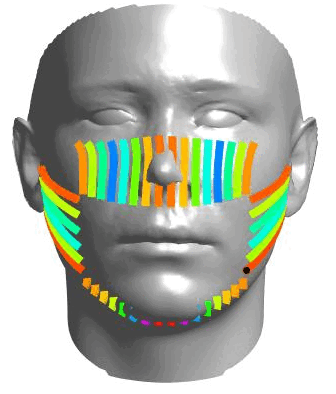 |
Akshay Anand*, Tso-Kang Wang, Tomas Solano, Kenneth Breuer, Rajat Mittal, Kourosh Shoele 74th APS - DFD, 21 - 23 November, Phoenix, AZ, USA, 2021 conference Using a facemask with proper fit is an effective method to diminish the airborne transmission of pathogenic agents, and facemasks have been a critical element in our defense against COVID-19. The mask material and fit on the wearer’s face are critical to the overall effectiveness of the mask against the virus. Here, we propose an analytical integral boundary layer solution to quantify the flow field in the interface region between face and mask. The mask deployment study is performed for more than 1000 distinct morphable faces and different mask shapes. The space between the mask and face is represented with many radial interconnected channels. Each channel has a porous top boundary and extends from the inner mouth/nose high-pressure region to the mask's outer edge. The flow distribution in the channels is determined by the compatibility condition of the inlet pressure. The model is validated with a detailed flow simulation and employed to find the interconnected relation between fitness, porosity, and leakage through the mask. The results demonstrate the relation between breathability and filtration performance of the mask as a function of the masks permeability coefficient and fit. Finally, we discuss the statistics of peripheral leakage patterns in a large cohort of faces obtained from the model. Click here |
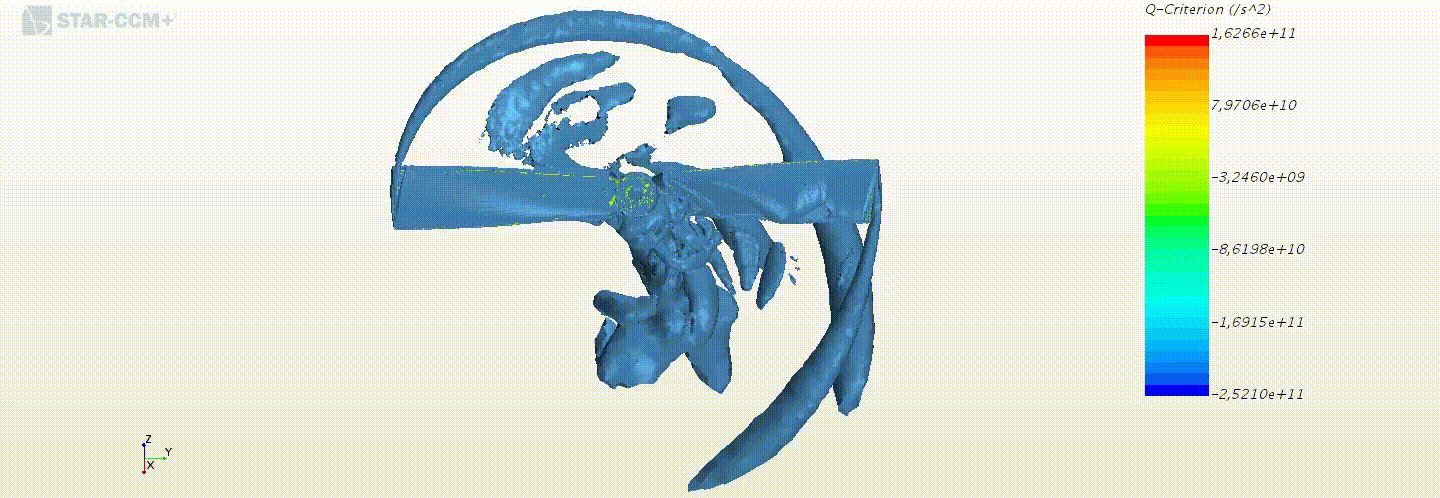 |
Advisor: Thierry Jardin ISAE - SUPAERO, Toulouse, France, March 2019 - Sept 2019 Master's Thesis In this project, we had a numerical database for propeller forces and moments as functions of freestream velocity and incidence angle. I have performed high fidelity computational fluid dynamics (CFD) simulations on propellers at different free stream conditions. Later I have validated the simulation results with an experimental database obtained in ISAE SUPAERO low - Reynolds number wind tunnel (SaBRe). Thereafter, flow analysis was conducted to identify flow patterns that generate the asymmetric propeller forces and moments. The effect of different blade geometries (pitch angle) were also analyzed. More details can be found here. |
 |
Mentor: Helene Baillet, Dr. Islam Ramadan CNRS Institut Pprime, Poitiers, France, Nov 2018 - Feb 2019 Master's Research Internship The objective of the project was to compare the two sets of velocity measurements made at a different Reynolds number using different measurement techniques, PIV and LDA. The comparison had helped us to access the performance of these two optical methods to capture the transition of turbulence in oscillating flows and had given more insight into physics underlying the phenomenon of the transition of turbulence in oscillating flows. |
 |
The Lorenz model also called the Lorenz dynamic system or Lorenz oscillator, is simplified modeling of meteorological phenomena based on fluid mechanics. This model is a three-dimensional dynamic system which generates chaotic behaviour under certain conditions. It is one of the Chaos theory's most iconic images and illustrates the phenomenon now known as the Butterfly effect or (more technically) sensitive dependence on initial conditions. |
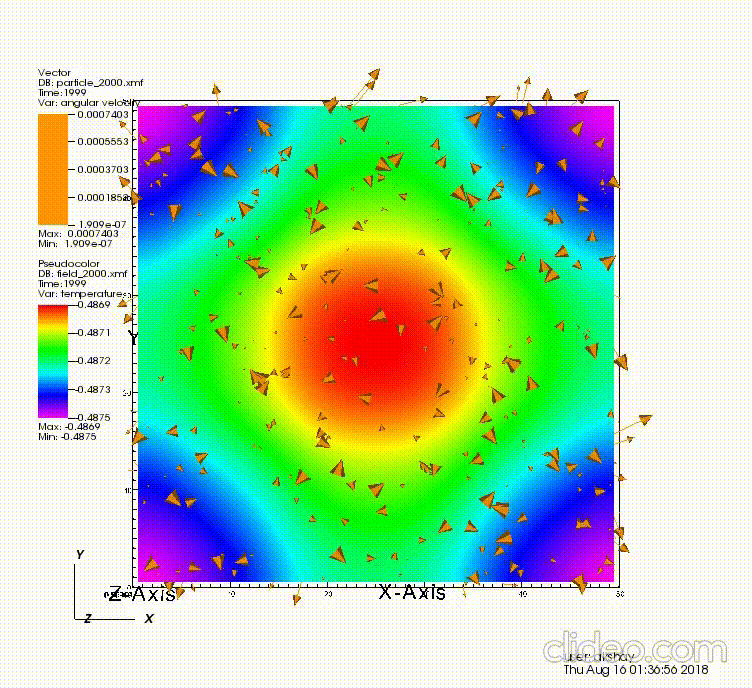 |
Advisor: Enrico Calzavarini, Francois G. Schmitt Ecole Polytechnique Lille, France, April 2018 - Aug 2018 Master's Research Internship Marine phytoplankton organisms are small (around 10 -100 microns) and live in suspension in a turbulent environment. During their evolution, they have developed adaptive strategies that allow them to optimize their acquisition of nutrients and light conditions, via motility, or through a specific form and behavior. We focus here on diatoms, planktonic microorganisms belonging to phytoplankton, lacking swimming capacities. We selected to model the non - spherical particle, elongated and thin, modeled as a particle undergoing the effect of drag. These particles were placed in a homogeneous and isotropic turbulent flow (direct numerical simulation, DNS) in which a passive scalar was also simulated. The passive scalar fields represented the nutritive salt necessary for the growth of diatoms. Numerical simulation targeted to consider the rate of the encounter between planktonic organisms and nutrients, under the effect of turbulence. We also studied the influence of the non - spherical shape of the particle on the encounter rate. |
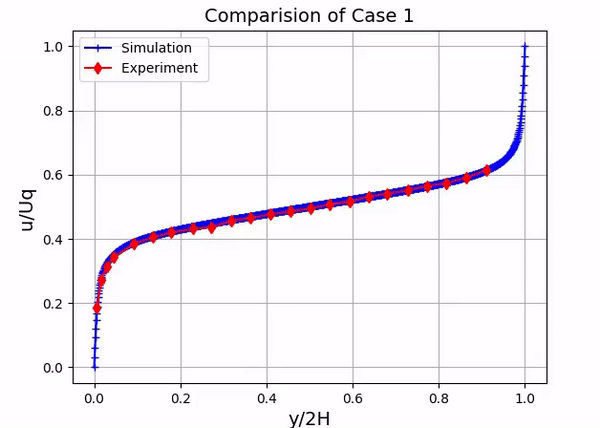 |
Mentor: Jean-Philippe Laval Ecole Centrale de Lille, France, Jan 2018 - April 2018 Master's Research Project The objective of this project was to program a turbulent model in a simple case and to compare the results with the theoretical solution in the laminar case, and with experimental results for the turbulent case. As the case was simple, the effect of several parameters such as the number of grid point as well as the grid stretching near the wall was investigated. |
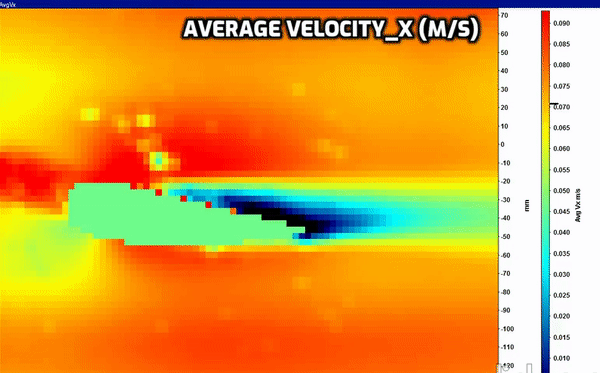 |
Mentor: Christoph Cuvier Ecole Centrale de Lille, France, Jan 2018 - March 2018 Master's Experimental Exposure The objective of this study was to obtain details about the both the instantaneous and mean velocity. Also, vorticity structures of the flow field around and behind the airfoil was investigated. |
|
Mentor: Ilkay Solak The key objective of this project was to develop a Fortran code capable of developing a mesh with wall-normal stretching. The documentation of code can be found on my git repository. More details can be found here. Ecole Centrale de Lille, France, Nov 2017 - Jan 2018 Numerical Project |
|
|
|
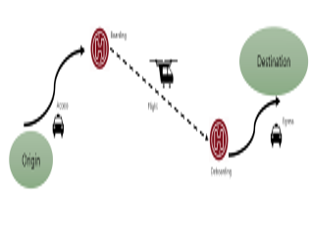 |
Akshay Anand*, Harleen Kaur, Cedric Y. Justin, Turab A. Zaidi, Dimitri N. Mavris AIAA SciTech Forum, 2021 PDF | BibTex | DOI | |
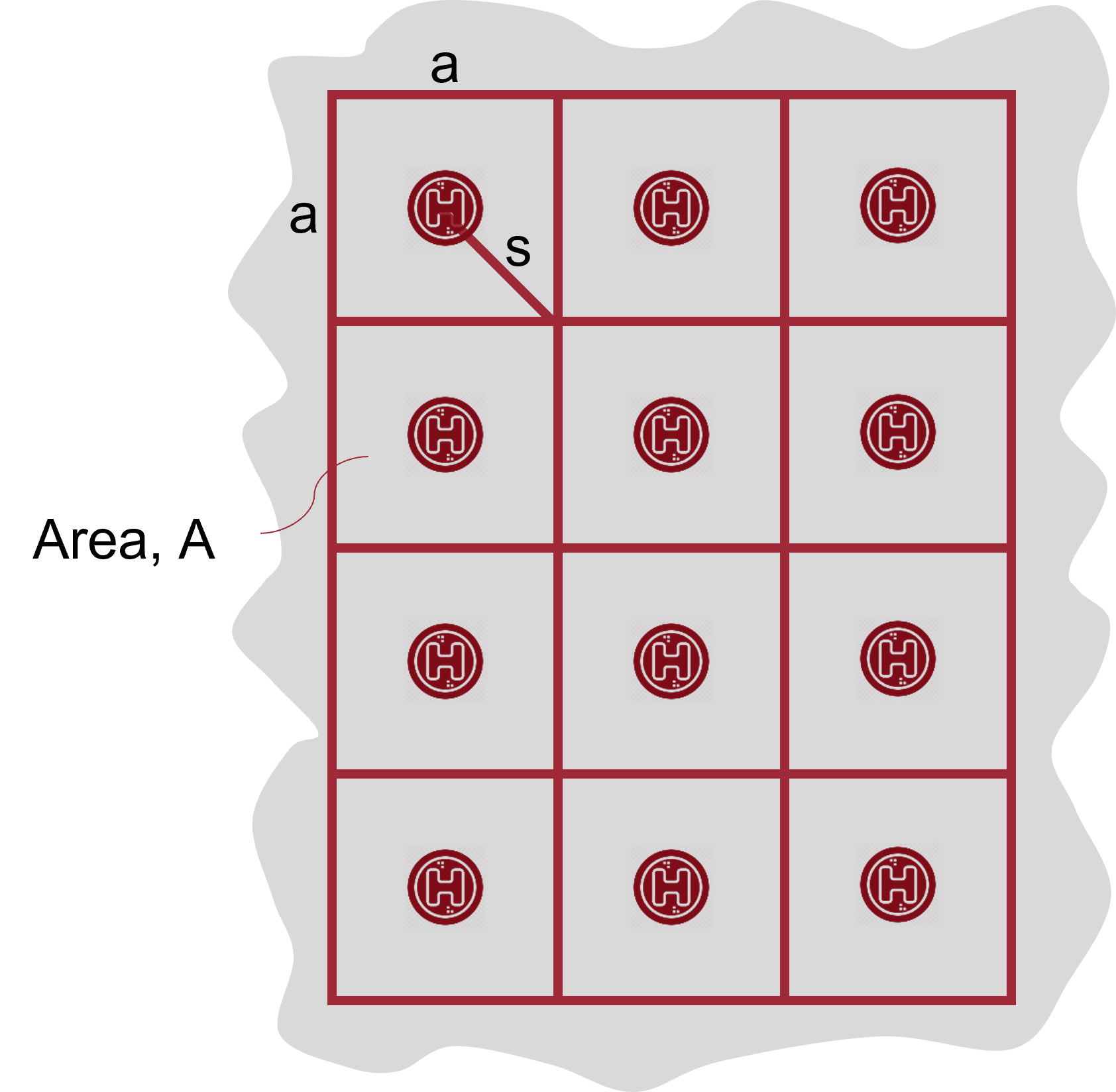 |
Madhukar P. Mayakonda, Cedric Y. Justin, Akshay Anand, Colby J. Weit, Jiajie (Terry) Wen, Turab A. Zaidi, Dimitri N. Mavris AIAA Aviation Forum, virtually, 2021 PDF | BibTex | DOI | |
 |
Jiajie (Terry) Wen, Colby J. Weit, Akshay Anand*, Madhukar P. Mayakonda, Turab A. Zaidi, Dimitri N. Mavris AIAA Aviation Forum, virtually, 2021 PDF | BibTex | DOI | |
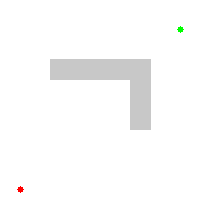 |
Colby J. Weit, Jiajie (Terry) Wen, Akshay Anand*, Madhukar P. Mayakonda, Turab A. Zaidi, Dimitri N. Mavris Aerospace Europe Conference, Bordeaux, France, 2020 PDF | BibTex | |
|
|
 |
Akshay Anand*, Kourosh Shoele Presented at American Physical Society - Division of Fluid Dynamics, Washington, USA, 2023 Scientific Presentation Feel free to contact me for slides. |
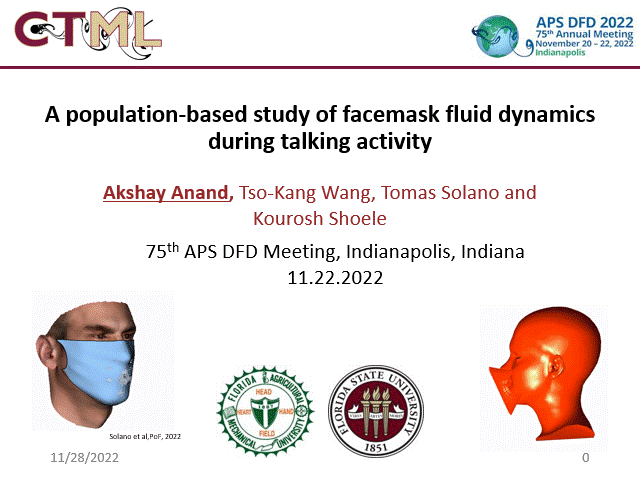 |
Akshay Anand*, Tso-Kang Wang, Tomas Solano, Kourosh Shoele Presented at American Physical Society - Division of Fluid Dynamics, Indianapolis, IN, USA, 2022 Scientific Presentation Feel free to contact me for slides. |
|
Akshay Anand*, Tso-Kang Wang, Tomas Solano, Kourosh Shoele Presented at Florida Fluid Dynamics Symposium-I Tallahassee, FL, USA, 2022 Scientific Presentation Feel free to contact me for slides. Unfortunately, the video is not publically available :(. |
|
Akshay Anand*, Tso-Kang Wang, Tomas Solano, Kenneth Breuer, Rajat Mittal, Kourosh Shoele Scientific Presentation Presented at the American Physical Society - Division of Fluid Dynamics, Phoenix, AZ, USA 2021. Feel free to contact me for slides. Unfortunately, the video is not publically available :(. |
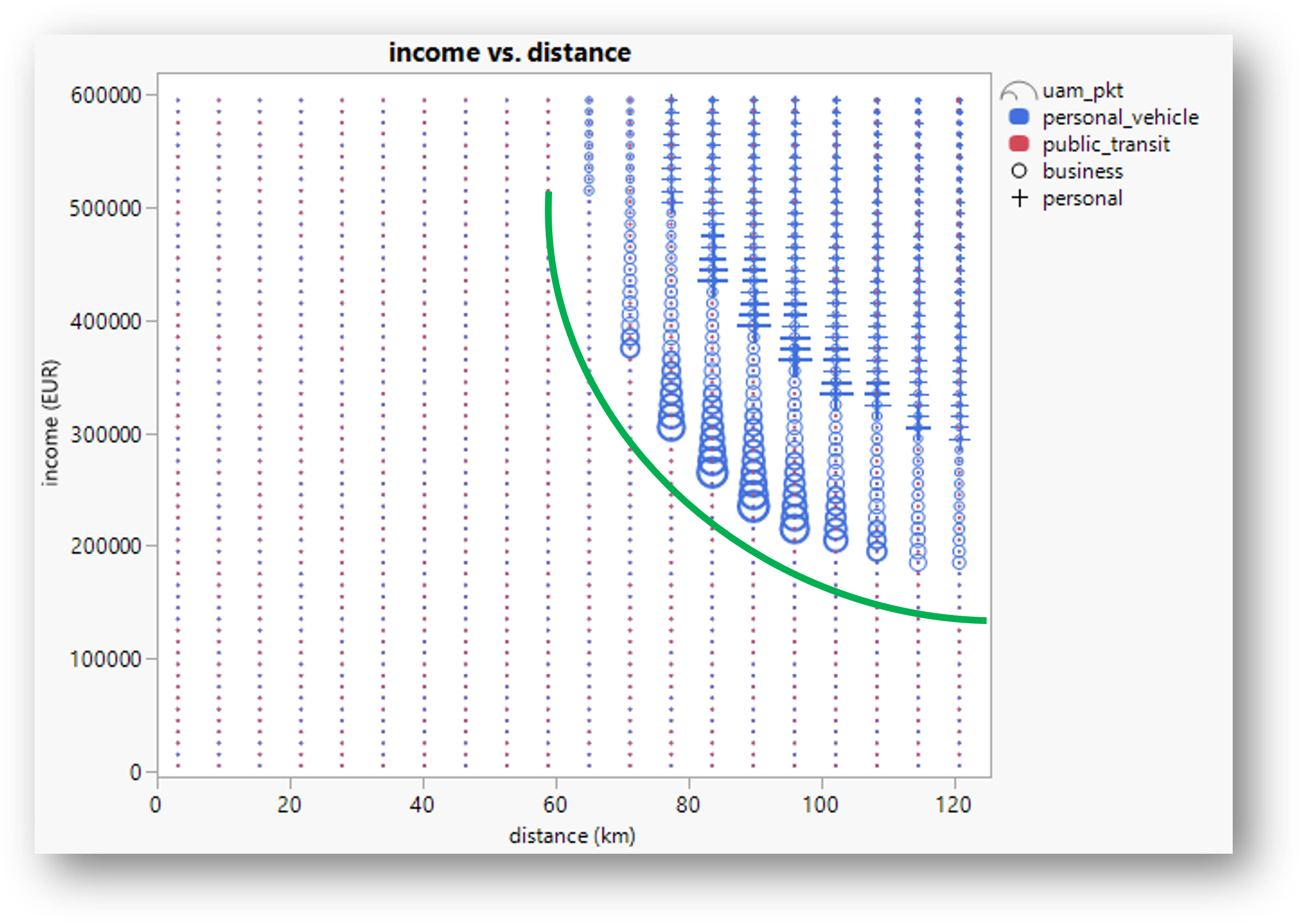 |
Akshay Anand*, Madhukar P. Mayakonda, Colby J. Weit, Jiajie (Terry) Wen, Turab A. Zaidi, Dimitri N. Mavris Scientific Presentation Presented at the American Institute of Aeronautics and Astronautics , Virtually 2021. PDF | |
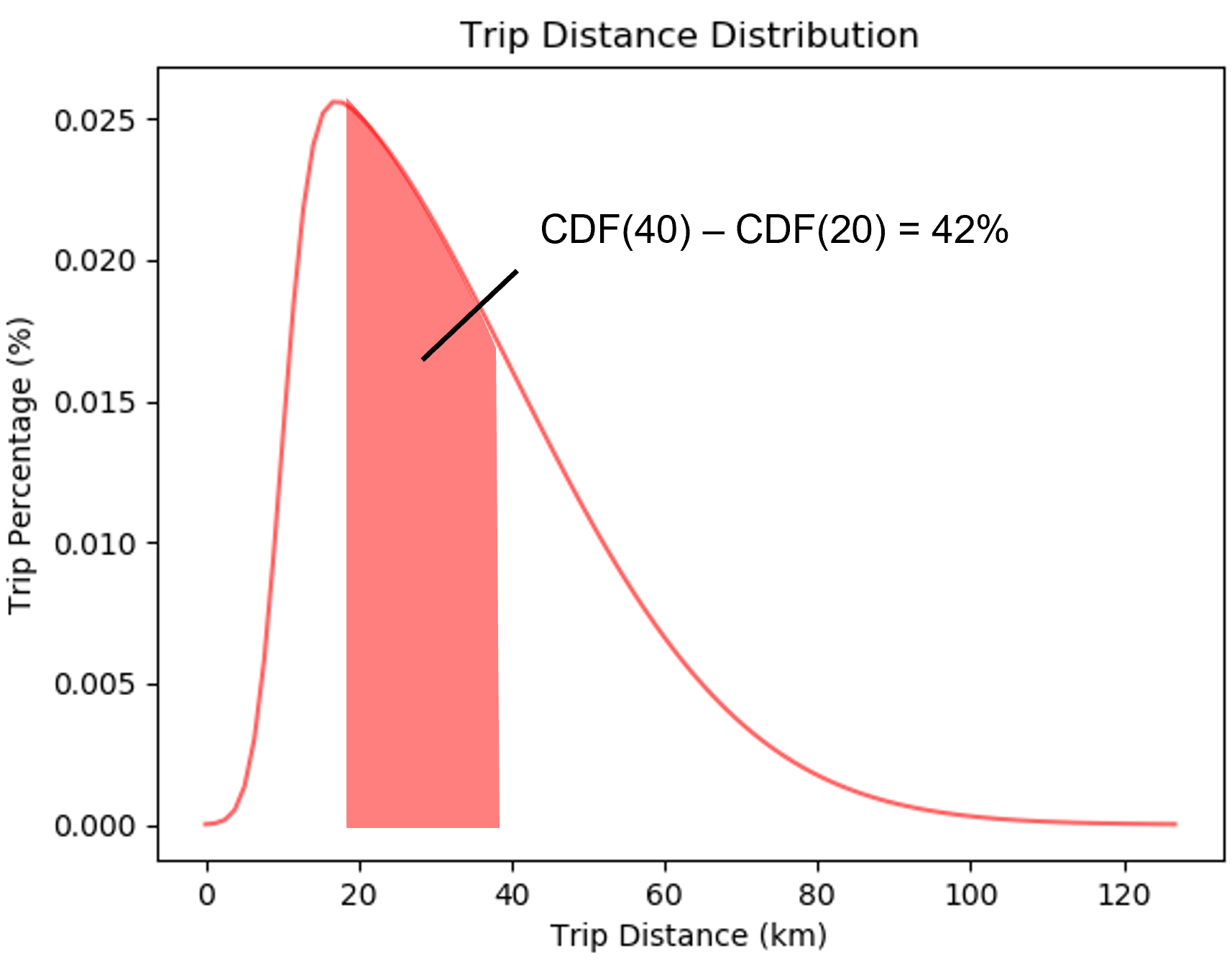 |
Akshay Anand*, Madhukar P. Mayakonda, Colby J. Weit, Jiajie (Terry) Wen, Turab A. Zaidi, Dimitri N. Mavris Scientific Presentation Presented at the American Institute of Aeronautics and Astronautics , Virtually 2021. PDF | |
 |
Akshay Anand*, Enrico Calzavarini, Francois G Schmitt Scientific Presentation Presented at the Laboratory of Oceanology and Geoscience 2019. PDF | |
|
|
|
2023 Nominated for Graduate Studnet Leadership Award $1,000 by FAMU-FSU College of Engineering, FL, USA |
|
|